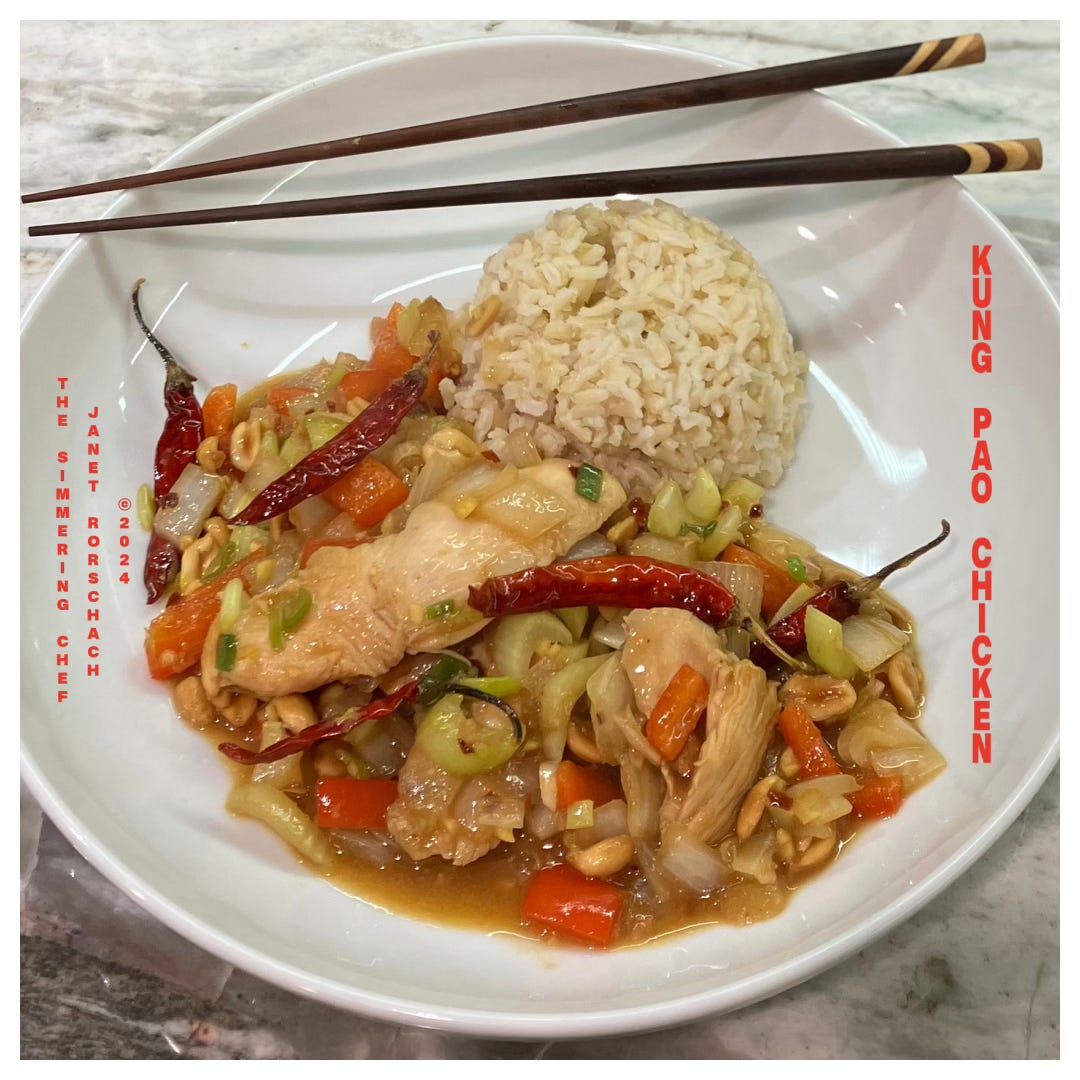Food can never be too clean, and meat can never be sliced too thin.
(食不厭精,膾不厭細)
~Confuscious
Asian cuisine and celiac disease are not friends because I love Asian cuisine, and I know too well it is not my friend, especially Chinese cuisine. I’ve given up going to Asian restaurants because wheat is in almost everything.* That creates loads of sadness because I adore Asian flavors. Their seasoning balance is wondrous. It would be quite easy for me to sit down to a restaurant’s bowl of fried rice and plow right through it. Dumplings? I’ll take two portions, please. Sweet and Sour Soup with the wood ear mushrooms? I am salivating here.
In the olden days, when no one knew about celiac disease, whenever I went to a Chinese restaurant, I unfailingly ordered my favorite, Kung Pao Chicken. It was my version of heaven in a bowl: hot umami with rice. I remember living in Seattle and trudging up a two-block hill in the Evergreen district to sit down to eat a generous plate of it. After every grain of rice was consumed, I would sigh with contented pleasure.
These days, I dare not even try it. Otherwise, in about two hours, I double over, groan, and walk the room in circles as a gluten-laden sword fights with my insides. Damn celiac!
For those who suffer like I do, below’s a reasonable alternative to the gluten-laden bowl of absolute yumminess. It has the spicy heat and umami of the original without the gluten finding another way to cause damage.
*Vietnamese and Burmese food, as well as some Thai food, are very celiac-spectrum friendly. Japanese food requires some substitution, such as using tamari to replace soy sauce, but Chinese food is really hard to work with. Some of the flavors and textures can only be produced using wheat-filled ingredients.
NOTE: I’ll be away for three weeks for surgery and recovery. Nothing major, but I’ll be able to see again, which thrills me no end! Stay safe, and I’ll see you at the end of May or the first part of June.
JANET’S GLUTEN-FREE KUNG PAO CHICKEN
INGREDIENTS
6 ounces boneless, skinless chicken breasts, cut on the bias into thin slices
¼ yellow or white onion, small diced
1 celery rib, small diced
¼ red pepper, small diced
MARINADE INGREDIENTS
1 teaspoon Tamari (Gluten-free soy sauce)
1 teaspoon sake or dry sherry
salt and freshly ground pepper, to taste
SAUCE INGREDIENTS
1½ teaspoons hot—not boiling— water
½ teaspoon honey
¾ teaspoon unseasoned rice vinegar
2 teaspoons Tamari (Gluten-free soy sauce)
¾ teaspoon of toasted sesame oil
COOKING INGREDIENTS
~1 Tablespoon neutral vegetable oil, divided (I recommend avocado)
1 teaspoon cornstarch
1 teaspoon minced fresh ginger
2 garlic cloves, minced
1 green onion, use both the white and green parts, thinly sliced
4 to 6 whole d’Árbol chilis
red chili flakes, to taste
1 Tablespoon roasted peanuts or cashews, coarsely chopped
steamed rice, for serving (optional
METHOD
MARINADE METHOD
In a medium bowl, stir together the tamari, sake, salt, and pepper.
Add the chicken to the bowl and toss to coat the pieces.
Marinate for at least 20 minutes but no more than an hour.
SAUCE METHOD
In a small bowl, stir together the water, honey, rice vinegar, sesame oil, and the tamari.
Set aside to add to the cooking method.
COOKING METHOD
Set up a bowl by your stove.
In a wok or cast iron pan, heat ~1 teaspoon of oil over medium-high heat.
When the oil is hot but not smoking, add the onions, celery, and bell pepper.
Toss the ingredients in the pan to cook them without scorching them.
Season with a bit of salt and pepper to taste.
Transfer to the reserved bowl.
Return the pan to the heat and add more oil.
Add the chicken to the pan and cook, stirring occasionally, until lightly browned and cooked through.
Once cooked, toss the chicken with the cornstarch and transfer to the reserved bowl with the vegetables.
Give the pan a quick wipe.
Heat a touch more oil in the pan.
Stir in the ginger, garlic, green onions, d’Árbol chilis, and red pepper flakes, and cook, stirring, for about 45 seconds. You want the garlic to bloom—which means the heat helps release its aroma.
Stir in the reserved sauce and bring it to a simmer.
Return the chicken and vegetables to the pan and stir.
Continue cooking until the sauce thickens and coats the chicken and vegetables.
Taste and adjust the seasonings.
Stir in the peanuts and serve over rice.





Chef J! I love this recipe a lot. I don’t react badly to gluten, but Marsha sure does. She also can’t eat chicken. So Kung Pao Turkey or Pork for our house. I love the changes you made to the original.
But I am more concerned about your upcoming surgery. Any support we can give from afar?
This looks divine. And I would even do the gluten-free version, to boot. Why not? I have everything. Except the chilis. I cannot remember ever seeing them in the store. These are fresh, correct? What can I replace them with, should I be unsuccessful at finding them?